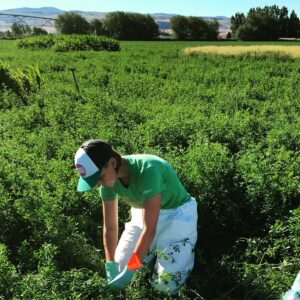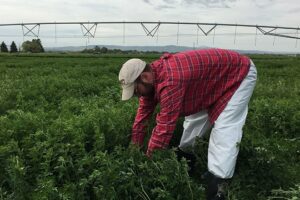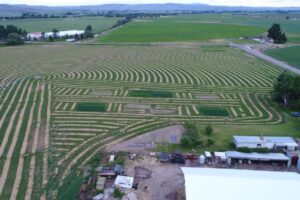
Ensuring a safe food supply is a critical part public health. From 2015-2019, Dr. Curl conducted a study to understand how pesticide breakdown products may get into our food supply – and how they can be kept out. Specifically, she investigated how crops grown in fields treated with a soil fumigant called Methyl Bromide (MeBr) take up inorganic bromide into their tissue. In high enough doses, this inorganic bromide can be toxic to livestock and, potentially, to humans.

MeBr is a pesticide used to sterilize soil and can be an effective tool against many pests, including the pale cyst nematode (PCN) Globodera pallida. PCN can lead to major yield loss in potato fields, and was first detected in Idaho by the USDA in 2006. Due to its status as a quarantined pest, this detection had a major impact on potato exports, including closure of several international markets to Idaho potatoes.
This devastating incident prompted the Idaho State Department of Agriculture (ISDA) and USDA to quickly establish an intensive PCN eradication program, and the most effective strategy implemented involves soil fumigation with MeBr. The program’s success has allowed the majority of international and domestic markets to stay open to Idaho’s $1 billion potato industry; however, it is necessary to cover the ground with impermeable tarps during fumigation to prevent emissions from affecting environmental and human health.

While the tarping provides these protective health measures, under certain conditions, the MeBr trapped under these impermeable tarps may break down to form inorganic bromide, which itself has some associated toxicity. It is this inorganic bromide that has the potential to be taken up into plant tissue, which then has the potential to become part of animal or human diets. Dr. Curl’s team developed crop management strategies for MeBr-treated fields, determined background bromide concentrations present in soil and crops from untreated comparison fields, and provided agricultural recommendations for current and future MeBr field treatment.